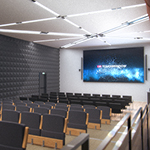
AUDITORIUM
Enterprise Digital Workspace
Capture audience attention and engage viewers with impactful visualization systems and integrated AVL architectures.
It’s more and more often that we encounter large screens, which can take up entire walls inside or even on extended outdoor surfaces. They are common in highly frequented places: shopping mall galleries, auditoriums, conference rooms, stadiums, concerts, live events, shops, stations, airports, large meeting rooms... they allow you to involve large numbers of people, tell stories, give information, promote products and services. They shorten distances, attracting the eye and making the contents appear spectacular. Used indoors, they extend the space by turning the wall into a new, exciting show.
At the base of this diffusion is technological innovation, which allows ever more efficient solutions and increasingly reduced investments. However, great care must be taken in the choice made, because the options available in the field differ even substantially from one another and we need to evaluate some fundamental aspects before choosing between LED Wall, Video Wall or Touch Wall.
In summary, the LED Wall is composed of modular components equipped with LED lamps. Each module, depending on the size, contains a variable number of LEDs, from a few tens to thousands. By combining the modules, you can compose screens of virtually unlimited size and without shape constraints: vertical, horizontal, polygonal. The modules are thin and adaptable to inclined or irregular surfaces, at angles and curves.
The Video Wall is a screen composed of several displays joined together. The image is not continuous, but interrupted by the frames of the different displays. Today, these are really small, almost thousandths and therefore barely visible. The displays can be combined with each other, but the layout possibilities are more limited than the LED Wall.
Touch Walls are composed of multiple displays joined together, which become Multi-Touch using specific technologies. They offer a large interactive surface which makes them suitable for very crowded interior spaces, such as stations, airports, lobbies, business centers, fairs, shopping galleries. Just like tablets and smartphones, touch interactivity attracts the user and simplifies his interaction with the contents. It stimulates engagement and feedback, while also allowing information to be gathered on the behavior and preferences of visitors.
Today, large wide screens are no longer just in stadiums or in shopping areas: they are also spreading internally, because they offer immersive experiences of great emotional impact. Before choosing a Wall, it is best to think about the environment for which it is intended.
For outdoors, in direct natural light conditions, the LED Wall offers high vividness and high luminosity. It’s precisely for this reason that it is suited to outdoor stadiums and arenas, as well as billboards and concerts. In interior spaces, it is ideal in the presence of sloping or irregular surfaces, but increasingly, thanks to the decrease in price, it is preferred to the traditional Video Wall. The Touch Wall provides interaction with the public and is more suited to enclosed spaces to create truly dedicated user experiences.
Walls should be considered as large projection screens: these are absolutely useless in the absence of adequate content. Static images, movies, motion graphics, texts, applications... it is necessary to carefully consider the type of content before choosing how to convey it. A Wall cannot enhance an image or a movie in low resolution; in fact, it will make its defects even more evident. In this sense, neither solution is better than the other in the absolute sense between the LED Wall and the Video Wall, but there are more effective solutions based on specific content.
In the presence of applications in which many users are simultaneously called upon to interact with the contents, the choice automatically falls on the Touch Wall
Technological innovation pushes towards ever higher image resolutions, but be careful: the ability of the human eye to distinguish details decreases with increasing distance from the screen. Knowing how close users can approach the displays allows you to choose the most suitable resolution.
In LED Walls, the distance between two bright pixel points, known as pixel pitch, conditions the image quality. The smaller it is, the closer the image can be observed in high resolution, but this is more expensive and higher energy consumption due to the presence of a greater number of luminous bodies per module.
This problem is not true for the Video Wall and the Touch Wall, in which every single display has a native resolution. In this case, be careful of the technological architecture and the Wall Controller, the system that manages the image, which must allow each display to work at the highest possible resolution.
Make sure, before purchasing, that you can independently manage the system through customized Digital Signage software, so as not to depend on external resources. Focusing on flexible tailor-made solutions that allow updates or implementations.
Wall technology offers great possibilities for transforming an indoor or outdoor space, but you should study every aspect of the installation alongside experts. Investments in setting up a wall are still important, and it is best to take their time horizon into consideration, before opting for solutions that are scalable and easily updated in the medium and long term.

Capture audience attention and engage viewers with impactful visualization systems and integrated AVL architectures.

We create showrooms and corporate museums where you can tell your story in a new and exciting way.
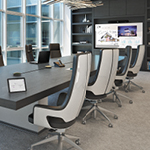
We design Meeting Rooms that integrate AVC hardware, software and automation solutions to physical environments, dedicated to sharing, collaboration and comparison.
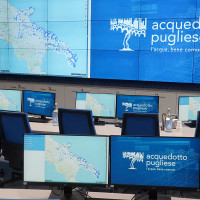
Acquedotto Pugliese takes care of citizens and the territory every day, ensuring a more efficient and sustainable use of water resources. Room control is the digital heart of this system, as innovative as it is indispensable.
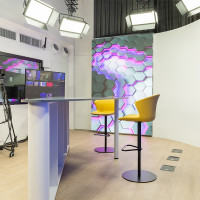
A new technological setup to meet the communication needs of the Region.
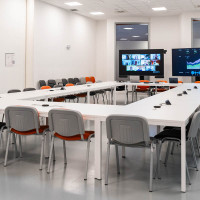
Touchwindow creates a turnkey installation at the DAMA Technopole in Bologna, featuring audio-video solutions, automation, and reconfigurable spaces.